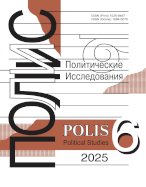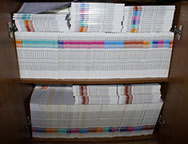The “Image” of a Political Leader and Possibilities of Changing It
Rubric: SOCIUM AND POWER
For citation:
Durdin D.M. The “Image” of a Political Leader and Possibilities of Changing It. – Polis. Political Studies. 2000. No. 2
Abstract
The article presents the results of a research undertaken to investigate the perception of political leaders’ images by Russian electors, to expose these images’ substantial content and mutual disposition in psychological coordinates, and to explore the possibility, as well as the limits of possible manipulation of the electorate’s attitude to political actors with the help of visual means. The research was carried out through and on the basis of a poll organized in 1998 in Moscow, Omsk and Rostov-on-Don. Analysis of the data obtained, revealed (a) multidimensionality of the Russian electorate’s perception of politicians, and (b) clear-cut differentiation of their images by the indicators of dynamism and emotional faith, as well as (c) the decisive role of the latter factor in the appraisal of a politician. The research has shown that manipulative technologies, while being apt to considerably modify the already formed image of a politician, do not, however, create new images, but only adjust the old ones.
Content No. 2, 2000
See also:
Van’kov V.A.,
Residentiary Structure in Electoral Behaviour (With Materials of Parliamentary Elections in Russia Investigated). – Polis. Political Studies. 2003. No6
Nazarchuk A.V.,
The concept of deliberative policy in modern political process. – Polis. Political Studies. 2011. No5
Nechayev V.D.,
Factors and Preconditions of Local Self-government’s Financial Autonomy. – Polis. Political Studies. 2004. No6
Gelman V.Ya., Lankina T.V.,
Political Diffusions under the Conditions of a Spatially Mixed Regime: Institution-building and Election of City Mayors in Russia. – Polis. Political Studies. 2007. No6
Tolpygo A.K.,
The Reds in the Ukraine. – Polis. Political Studies. 1999. No4




.jpg)






 print
print.jpg)
.jpg)
